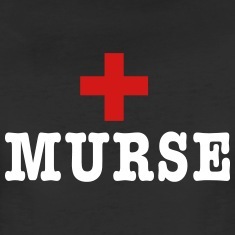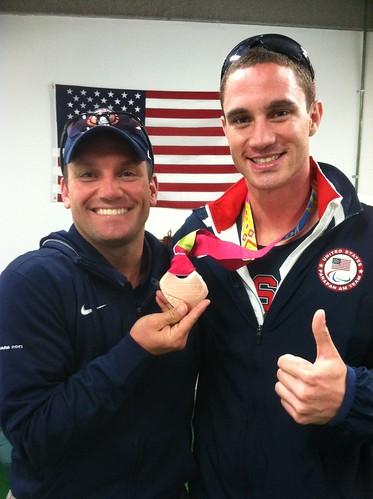 Dear research participant,
Dear research participant,
We invite you to participate in a research study
looking at the effects of different therapeutic taping procedures on back
muscle endurance.
Nature and Purpose of the
Study
When treating patents with low back pain, it is common
practice among physical therapists and chiropractors to improve back muscle
function and endurance. One way to
accomplish this is through the use of therapeutic taping procedures. However, little
is known about the effectiveness of different taping procedures.
Therefore the aim of this study is to compare for
differences in back muscle endurance under three treatment conditions: when two
different types of tape are applied to the back and when no tape is applied.
If you consent to take part in this research study, it
is important that you understand the purpose of the study and the tasks you
will be asked to complete. Please make sure that you ask any questions you may
have, and that all your questions have been answered to your satisfaction
before you agree to participate.
What the Study will Involve
Potential research participants will be considered for
inclusion in this study if they are between the ages of 18 and 60 years of age
and are currently experiencing low back pain.
You would be excluded from participating in this study if:
1)
Your
back pain radiates into the leg and beyond the knee
2)
You
exhibit signs or symptoms which may indicate a potentially serious condition
3)
You
have had surgery to your lower back
4)
You are
currently pregnant
5)
You
have a history of tape or adhesive allergy
6)
You do
not think that you could tolerate the muscle endurance test.
If you decide to participate in this study, you will be
asked to complete the following tasks
·
Complete
4 questionnaires that ask about:
1)
Your
demographic information (e.g., age, height, weight), and details about your
history of back pain.
2)
The
effects of back pain on your daily activities.
3)
The
intensity of your back pain.
4)
Your
attitudes about the relationship between your back pain and your work related
and physical activities.
Perform a back muscle endurance
assessment. This assessment will require
you to lay prone (i.e., face down) with your upper body over the end of a
padded examination table, and then extend your upper body against gravity until
you reach a “neutral position” meaning that your back is straight. We will use three cloth straps to secure your hips and legs to the
table. These straps will be placed over
your hips, knees and ankles and towels will be placed at each level to ensure
that this set up is comfortable. Once this is accomplished, you will maintain
this position as long as possible while being timed by a research staff member.
Before starting this assessment, the research staff member will demonstrate the
test for you. It is estimated that the
questionnaires will take approximately 30 minutes to complete and the back
muscle endurance assessment will take 5 minutes to complete in addition to your
travel time to and from the clinic.
You will be asked to complete the back muscle endurance
assessment on three different occasions, each one to three days apart. Prior to the assessment, you will be treated
using one of the previously described options (Kinesiotex tape, athletic tape
or no tape). The tape will be applied to
specific muscles on your back and will be removed upon completion of the back
muscle endurance assessment.
Voluntary Participation and
Withdrawal from the Study
Your participation in this study is entirely voluntary.
You may withdraw at any time without discrimination or prejudice. If you elect
not to participate or to withdraw from the study, such actions will in no way
influence quality of healthcare you receive or the relationship with your
healthcare provider(s). All information is treated as confidential and no names
or other details that might identify you will be used in any publication
arising from the research. If you withdraw, all information you have provided
will be destroyed.
Benefits of the Study
It is possible that
there may be no direct benefit to you from participation in this study.
While there is no guarantee that you will personally
benefit, the knowledge gained from your participation may help others in the
future. For example, if one of the taping procedures appears to be more
effective, future patients with low back pain may benefit from this
understanding.
Possible Risks
We have identified two potential risks which could be
associated with your participation in this study. First, while this type of back muscle
assessment is routinely used by clinicians caring for patients with low back
pan, it is possible that you may experience some discomfort either during or
following the assessment. This type of response is rare, and the discomfort is
typically mild and self limiting in nature.
The second risk would be the result of a tape or adhesive allergy which
had gone undetected. This would
represent a very remote risk which will be minimized by only keeping the tape
in contact with your skin for short durations of time. You will be monitored
closely during the study and you are free to withdraw at anytime during the
sessions. If you experience any unwelcome symptoms associated with your
participation in this study, we will assist you by helping to arrange an
appointment with your primary medical provider.
If you have any questions about this project please
feel free to contact either myself, Dr. Jeffrey Hebert in Australia on +61 8 93602566 and J.Hebert@Murdoch.edu.au or, Dr Joel Dekanich in Colorado,
on 970.479.6262 and Joel@vailhealth.com.
We are happy to discuss with you any concerns you may have about this
study.
Once we have analysed
the information from this study we will put on our web site (http://vailhealth.com) a summary of our findings. You can expect to receive this feedback in
approximately six months.
If you are willing to consent to participation in this
study, please complete the Consent Form.
Thank you for your assistance with this research
project.
Sincerely
Jeffrey Hebert, DC, PhD
This study has been approved by the Murdoch University Human
Research Ethics Committee (Approval xxxx/xxx). If you have any reservation or complaint
about the ethical conduct of this research, and wish to talk with an
independent person, you may contact Murdoch University’s Research Ethics
Office (Tel. 08 9360 6677 (for overseas studies, +61
8 9360 6677) or e-mail ethics@murdoch.edu.au).
Any issues you raise will be treated in confidence and investigated fully,
and you will be informed of the outcome.
|
|





















